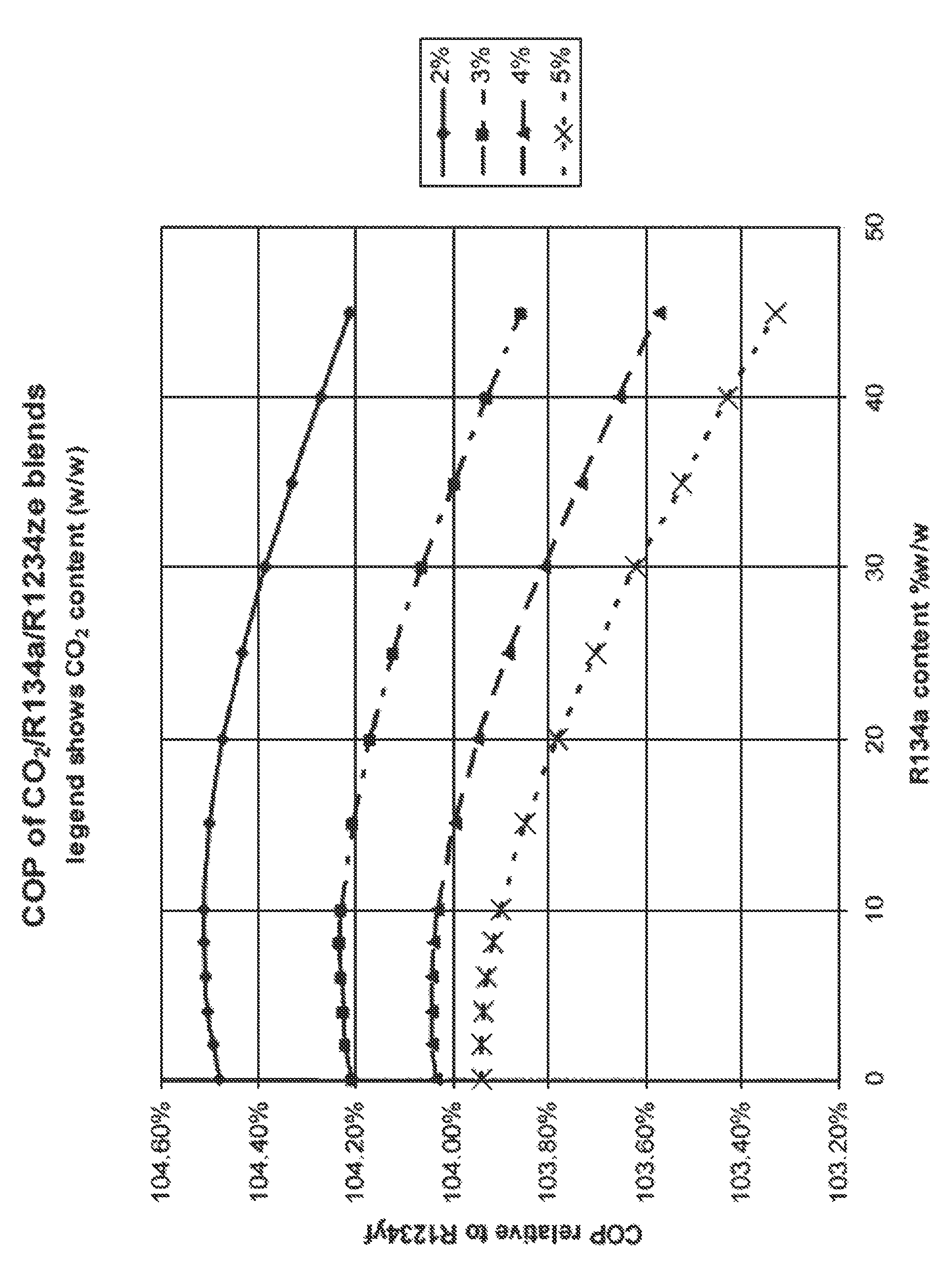Heat transfer compositions
a technology of compositions and heat, applied in the field of heat transfer compositions, can solve the problems of excessive flammability of r-152a, reduced flammability, and reduced flammability, so as to reduce gwp, reduce toxicity, and acceptable flammability
- Summary
- Abstract
- Description
- Claims
- Application Information
AI Technical Summary
Benefits of technology
Problems solved by technology
Method used
Image
Examples
examples
Flammability
[0146]The flammability of certain compositions of the invention in air at atmospheric pressure and controlled humidity was studied in a flame tube test as follows.
[0147]The test vessel was an upright glass cylinder having a diameter of 2 inches. The ignition electrodes were placed 60 mm above the bottom of the cylinder. The cylinder was fitted with a pressure-release opening. The apparatus was shielded to restrict any explosion damage. A standing induction spark of 0.5 second duration was used as the ignition source.
[0148]The test was performed at 23 or 35° C. (see below). A known concentration of fuel in air was introduced into the glass cylinder. A spark was passed through the mixture and it was observed whether or not a flame detached itself from the ignition source and propagated independently. The gas concentration was increased in steps of 1% vol. until ignition occurred (if at all). The results are shown below (all compositions are v / v basis unless otherwise state...
PUM
| Property | Measurement | Unit |
|---|---|---|
| GWP | aaaaa | aaaaa |
| GWP | aaaaa | aaaaa |
| temperature glide | aaaaa | aaaaa |
Abstract
Description
Claims
Application Information
 Login to View More
Login to View More - R&D
- Intellectual Property
- Life Sciences
- Materials
- Tech Scout
- Unparalleled Data Quality
- Higher Quality Content
- 60% Fewer Hallucinations
Browse by: Latest US Patents, China's latest patents, Technical Efficacy Thesaurus, Application Domain, Technology Topic, Popular Technical Reports.
© 2025 PatSnap. All rights reserved.Legal|Privacy policy|Modern Slavery Act Transparency Statement|Sitemap|About US| Contact US: help@patsnap.com

